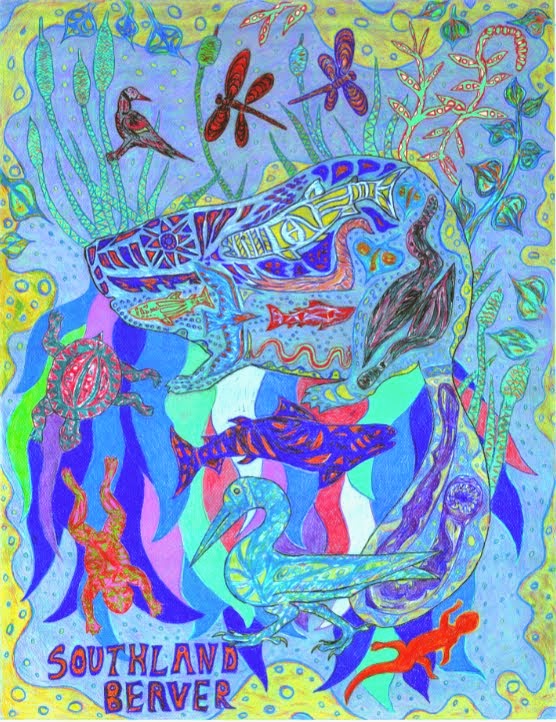 |
| Calleugas Creek. Camarillo CA |
Well, you can probably guess where my bias lies, but let me just suggest that given the amount of water hijacked from the land over the years through human use- we do owe it to the land to optimize the feasibility of even heavily human modified water inputs for wildlife use. In arid lands, every bit of water, even potentially polluted/modified systems can provide habitat as the shown above by the steelhead in Conejo Creek.
It should be noted here that beaver with their ability to dam and slow down the flow of water, could significantly 'cleanse' such systems and optimize them for rehab. The large pools they create further enhance the area for vegetation to get a foothold and then the vegetation filters the water of pollutants. Polluted sediment also settles in these pools for bacterial cleansing.
Let's look at some of the other anthropogenic spots for riparian rehab I have came across.
 |
| Ventura Wastewater Settling Pools |
Another hot spot for riparian rehabitation in human modified habitats is under freeway overpasses. In the Conejo steelhead story I mentioned earlier you will notice that the fish was found under the famed 101 freeway. Now, freeway overpasses don't immediately spring to mind when you think about potential spots for riparian wildlife refugia but they do provide some benefit in my experience. The shade they create cools the water down, a noted benefit for steelhead and other fish. And this shade, coupled with freeway pilings often allows water to linger longer though out the year in this microhabits. In short there is a strong argument to be made that freeway overpasses may actually serve as important refugia for aquatic species through the dry periods. Below are some pics I took back in April in the Santa Clara river underneath the 101 freeway. It should be noted that we had a really bad year for rain and the main body of the river was unusually dry by April in this stretch of the Santa Clara.
In water strapped socal, beggars can't be choosers when it comes to water availability and riparian habitat. A creative use of human modified systems, coupled with beaver reintroduction in a pragmatic and realistic method, offers our best bet for enhancing the riparian habitats we have left.
And here is one of the best videos I have seen yet on beaver reintroduction into an arid river systems, the San Pedro of southeastern Arizona. Go read the blog post form Earth's Internet where I first found the video, a friend of this blog, where there is an interesting post up about beavers, Colorado River, and the unique and almost extinct native fish fauna of the Colorado River basin:
How Human Dams Destabilize River Food Webs and Beaver Dams Stabilize Them
Support me on Patreon.
Like antediluvian salad on facebook.
Watch me on Deviantart @NashD1.Subscribe to my youtube channel Duane Nash.
My other blog antediluviansalad.blogspot











No comments:
Post a Comment